-
 Bitcoin
Bitcoin $118400
0.39% -
 Ethereum
Ethereum $3814
2.17% -
 XRP
XRP $3.547
1.34% -
 Tether USDt
Tether USDt $1.000
0.00% -
 BNB
BNB $769.5
2.95% -
 Solana
Solana $191.7
6.36% -
 USDC
USDC $0.9999
0.01% -
 Dogecoin
Dogecoin $0.2722
7.75% -
 Cardano
Cardano $0.8995
5.59% -
 TRON
TRON $0.3158
-0.78% -
 Hyperliquid
Hyperliquid $47.37
4.46% -
 Stellar
Stellar $0.4848
3.54% -
 Sui
Sui $4.031
1.72% -
 Chainlink
Chainlink $20.11
3.94% -
 Hedera
Hedera $0.2832
3.16% -
 Avalanche
Avalanche $26.20
4.27% -
 Bitcoin Cash
Bitcoin Cash $530.5
0.67% -
 Shiba Inu
Shiba Inu $0.00001568
3.59% -
 Litecoin
Litecoin $118.4
1.42% -
 UNUS SED LEO
UNUS SED LEO $8.976
-0.23% -
 Toncoin
Toncoin $3.349
2.54% -
 Polkadot
Polkadot $4.590
2.54% -
 Uniswap
Uniswap $10.56
-0.59% -
 Ethena USDe
Ethena USDe $1.001
0.00% -
 Monero
Monero $327.7
0.39% -
 Pepe
Pepe $0.00001422
2.62% -
 Bitget Token
Bitget Token $4.973
-1.22% -
 Dai
Dai $1.000
0.02% -
 Aave
Aave $331.9
1.59% -
 Bittensor
Bittensor $429.6
-0.56%
What are the environmental concerns with blockchain?
Blockchain's environmental impact, especially from energy-intensive Proof of Work systems like Bitcoin, has sparked global concern over sustainability and carbon emissions.
Jul 21, 2025 at 07:57 am
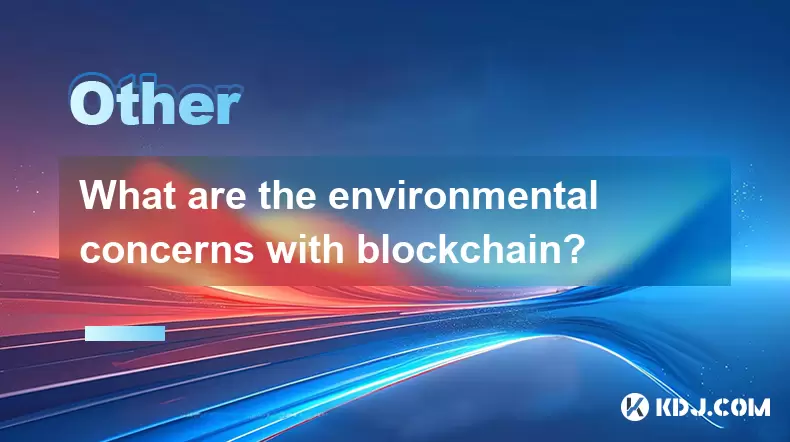
Energy Consumption and Proof of Work
One of the most pressing environmental concerns associated with blockchain technology is the high energy consumption associated with certain consensus mechanisms, particularly Proof of Work (PoW). This mechanism is famously used by Bitcoin and was previously used by Ethereum before its transition to Proof of Stake. PoW requires miners to solve complex mathematical puzzles to validate transactions, a process that demands significant computational power and, consequently, massive electricity consumption.
The mining process involves specialized hardware, such as ASICs (Application-Specific Integrated Circuits), which operate continuously and consume large amounts of electricity. Reports have indicated that Bitcoin's annual energy consumption rivals that of some small countries, raising concerns about carbon emissions and the sustainability of such networks.
- Bitcoin mining alone consumes more electricity annually than some nations.
- The majority of mining operations are located in regions where electricity is generated from fossil fuels, increasing the environmental impact.
- The decentralized nature of PoW blockchains means that energy consumption scales with network popularity.
Electronic Waste Generation
Another environmental issue linked to blockchain is the generation of electronic waste (e-waste). In PoW-based systems, miners frequently upgrade their hardware to remain competitive. As newer, more efficient machines are released, older models quickly become obsolete and are discarded.
This rapid turnover contributes to growing e-waste problems, especially in regions lacking proper recycling infrastructure. The environmental impact of e-waste includes soil contamination, air pollution, and toxic chemical leaks when disposed of improperly.
- ASIC miners have a short lifespan due to technological advancements.
- Discarded mining hardware contributes to global e-waste.
- E-waste from blockchain operations often ends up in developing countries with limited recycling capabilities.
Carbon Footprint and Sustainability
The carbon footprint of blockchain networks is a significant concern, especially when mining operations rely on non-renewable energy sources. In countries where coal or other fossil fuels dominate the energy grid, the environmental cost of maintaining a blockchain becomes substantial.
- Bitcoin mining in regions powered by coal significantly increases CO₂ emissions.
- Some mining farms have attempted to use renewable energy, but this remains a minority practice.
- There is growing pressure from environmental groups and regulators to green the blockchain industry.
Efforts are being made to address these concerns. For example, Ethereum’s shift to Proof of Stake dramatically reduced its energy consumption. Other blockchains are exploring green mining initiatives, including the use of hydro, solar, and wind energy.
Centralization and Environmental Impact
While blockchains are designed to be decentralized, the reality is that mining operations tend to centralize in specific geographic regions. This centralization can exacerbate environmental concerns when these regions rely on non-renewable energy sources.
- Mining pools are often concentrated in areas with cheap electricity, which may not be environmentally friendly.
- Centralized mining leads to localized environmental degradation.
- Regulatory efforts to control mining locations can help mitigate regional environmental damage.
Some countries have responded by banning or restricting mining activities to curb energy consumption and environmental harm. These regulatory actions reflect growing concerns about the unsustainable aspects of blockchain technologies.
Alternative Consensus Mechanisms and Solutions
To address environmental concerns, many blockchain developers are shifting toward more energy-efficient consensus mechanisms. Proof of Stake (PoS), Delegated Proof of Stake (DPoS), and Proof of Authority (PoA) are gaining traction as greener alternatives to PoW.
- PoS eliminates the need for energy-intensive mining by allowing validators to create new blocks based on the amount of cryptocurrency they "stake" as collateral.
- DPoS uses a voting system to select validators, reducing the number of nodes required to maintain the network.
- PoA relies on a limited number of trusted validators, further minimizing energy use.
These mechanisms significantly reduce the energy footprint of blockchain networks and are being adopted by major platforms like Ethereum 2.0, Cardano, and Polkadot.
Industry Initiatives and Green Blockchain Projects
Various initiatives and blockchain projects are emerging with a focus on sustainability and environmental responsibility. Organizations like the Crypto Climate Accord aim to make the blockchain industry net-zero by 2030.
- The Crypto Climate Accord has gained support from major players in the blockchain space.
- Projects like Algorand and Tezos are designed to be carbon-neutral or carbon-negative.
- Some platforms are investing in renewable energy infrastructure to power their networks.
These initiatives demonstrate that it is possible to build environmentally friendly blockchain systems, although widespread adoption and regulatory support are still evolving.
Frequently Asked Questions
Q: Does every blockchain consume a lot of energy?
No, not all blockchains consume large amounts of energy. Energy consumption largely depends on the consensus mechanism used. Proof of Work blockchains like Bitcoin are highly energy-intensive, while Proof of Stake or Proof of Authority chains are significantly more energy-efficient.
Q: Can blockchain be made environmentally friendly?
Yes, blockchain can be made environmentally friendly by adopting energy-efficient consensus mechanisms, using renewable energy sources, and supporting green blockchain initiatives. Many newer blockchains are already designed with sustainability in mind.
Q: How does Ethereum’s shift to Proof of Stake affect the environment?
Ethereum’s transition to Proof of Stake reduced its energy consumption by over 99.95%, making it far more sustainable compared to its previous Proof of Work model. This change significantly lowers the network’s carbon footprint.
Q: Are there any regulations targeting blockchain’s environmental impact?
Yes, several countries and regions are introducing regulations or restrictions on energy-intensive blockchain activities. For example, China has banned Bitcoin mining, partly due to environmental concerns. The European Union has also proposed rules to encourage the use of eco-friendly blockchain technologies.
Disclaimer:info@kdj.com
The information provided is not trading advice. kdj.com does not assume any responsibility for any investments made based on the information provided in this article. Cryptocurrencies are highly volatile and it is highly recommended that you invest with caution after thorough research!
If you believe that the content used on this website infringes your copyright, please contact us immediately (info@kdj.com) and we will delete it promptly.
- WIF Rockets: Riding the Bull Run Wave in Cryptocurrency
- 2025-07-21 18:50:12
- XRP Ledger Heats Up: Network Activity and Trader Buying on the Rise!
- 2025-07-21 18:50:12
- BFX, Altcoins, and ROI: Chasing the Next Big Crypto Wave
- 2025-07-21 18:55:12
- Binance, Seed Tag, and Crypto Tokens: What's the Deal?
- 2025-07-21 19:30:12
- Kaspa Price Surges Amid Layer 2 Buzz: Double Bottom Signals Bullish Momentum
- 2025-07-21 19:30:12
- Cryptocurrencies Surge: BNB Nears All-Time High Amid Market Uptick
- 2025-07-21 19:35:11
Related knowledge
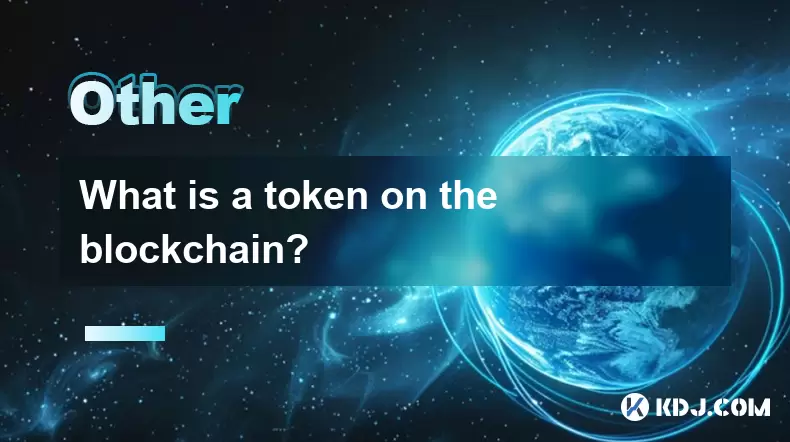
What is a token on the blockchain?
Jul 21,2025 at 07:00am
Understanding the Concept of a TokenIn the realm of blockchain technology, a token is a digital representation of an asset or utility that exists on a...
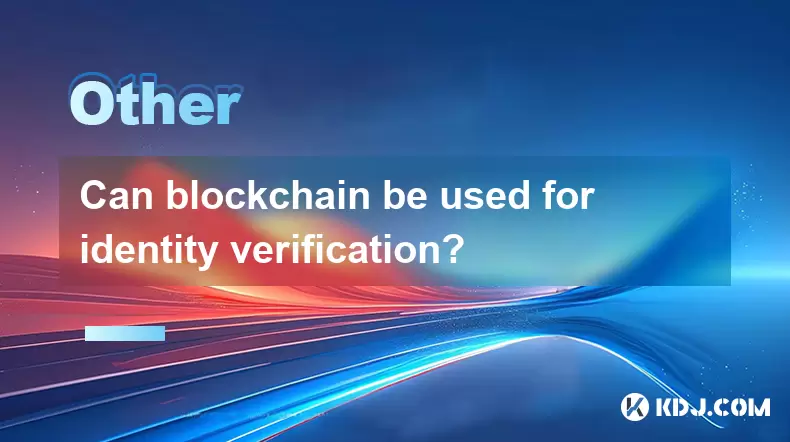
Can blockchain be used for identity verification?
Jul 18,2025 at 02:14pm
Understanding Identity Verification in the Digital AgeIn the modern digital landscape, identity verification has become a critical component for ensur...
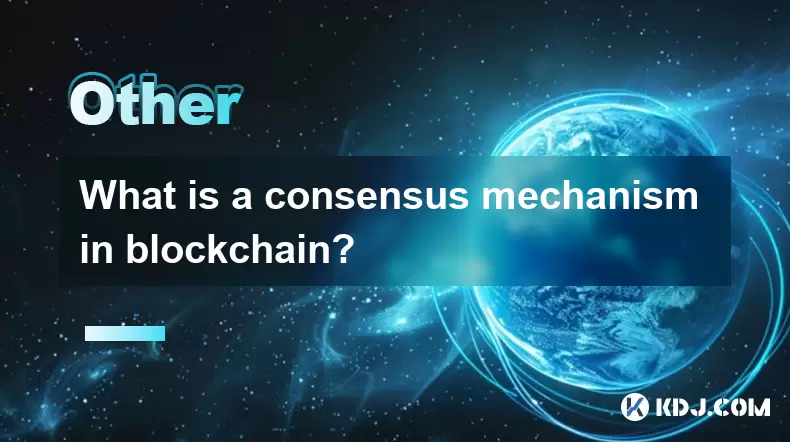
What is a consensus mechanism in blockchain?
Jul 21,2025 at 03:01am
Understanding the Basics of Consensus MechanismsA consensus mechanism is a critical component of any blockchain network. It refers to the process by w...
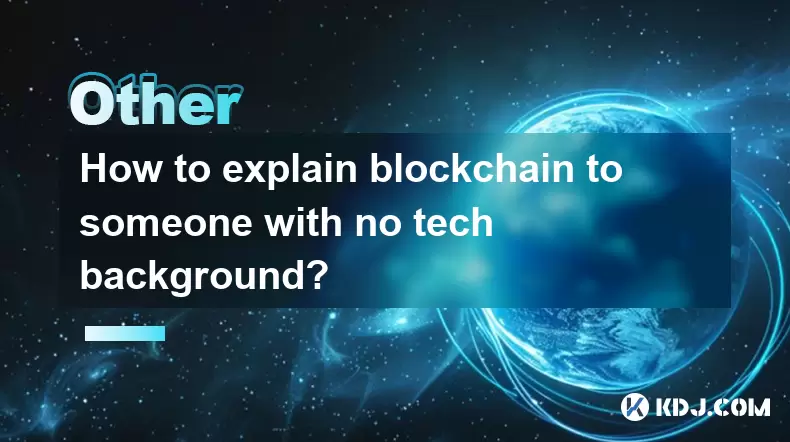
How to explain blockchain to someone with no tech background?
Jul 18,2025 at 11:08pm
Understanding the Basics of BlockchainTo explain blockchain to someone with no tech background, it's essential to start with simple analogies and avoi...
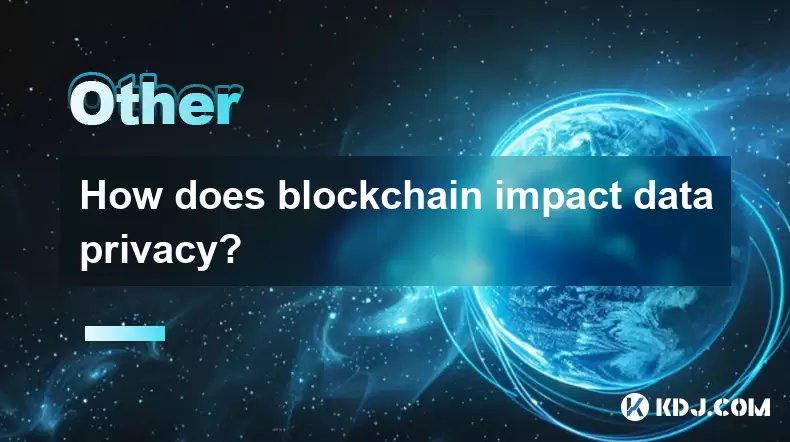
How does blockchain impact data privacy?
Jul 21,2025 at 02:21pm
Understanding the Role of Blockchain in Data PrivacyBlockchain technology, originally developed as the underlying infrastructure for cryptocurrencies ...

What is a layer 2 blockchain solution?
Jul 20,2025 at 01:42am
Understanding the Concept of Layer 2 BlockchainA layer 2 blockchain solution refers to a secondary framework or protocol built on top of an existing b...

What is a token on the blockchain?
Jul 21,2025 at 07:00am
Understanding the Concept of a TokenIn the realm of blockchain technology, a token is a digital representation of an asset or utility that exists on a...

Can blockchain be used for identity verification?
Jul 18,2025 at 02:14pm
Understanding Identity Verification in the Digital AgeIn the modern digital landscape, identity verification has become a critical component for ensur...

What is a consensus mechanism in blockchain?
Jul 21,2025 at 03:01am
Understanding the Basics of Consensus MechanismsA consensus mechanism is a critical component of any blockchain network. It refers to the process by w...

How to explain blockchain to someone with no tech background?
Jul 18,2025 at 11:08pm
Understanding the Basics of BlockchainTo explain blockchain to someone with no tech background, it's essential to start with simple analogies and avoi...

How does blockchain impact data privacy?
Jul 21,2025 at 02:21pm
Understanding the Role of Blockchain in Data PrivacyBlockchain technology, originally developed as the underlying infrastructure for cryptocurrencies ...

What is a layer 2 blockchain solution?
Jul 20,2025 at 01:42am
Understanding the Concept of Layer 2 BlockchainA layer 2 blockchain solution refers to a secondary framework or protocol built on top of an existing b...
See all articles

























































































